Recreational Water Illness and Injury (RWII) Prevention Week 2008
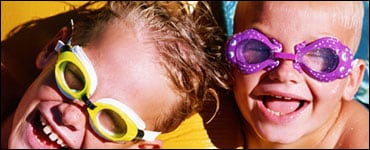
Recreational water illnesses (RWIs) are spread by swallowing, inhaling, or having contact with contaminated water from swimming pools, spas, lakes, rivers, or oceans1. The most commonly reported RWI is diarrhea caused by pathogens such as Cryptosporidium, Giardia, Shigella, and Escherichia coli O157:H7.
Children, pregnant women, and persons with compromised immune systems are at greatest risk for infection with these waterborne germs. Infection with Cryptosporidium can be life threatening in persons with weakened immune systems2. Other RWIs can cause various conditions, including skin, ear, eye, respiratory, wounds, and neurologic infections. Visit CDC's Healthy Swimming Web site for further information on RWIs.
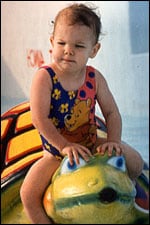
Understanding the Spread of RWIs
Approximately 30,000 recreational water illnesses were documented in the U.S. from 1978–2004, with a steady increase in reported outbreaks3. This increase is probably the result of a combination of increased water usage, improved outbreak detection, and increased disease transmission. The spread of RWIs is facilitated by:
• Chlorine-resistant germs
• Poorly maintained pools
• Low public awareness
Chlorine-Resistant Germs
Much of the increase in the number of reported outbreaks of diarrhea can be attributed to chlorinated pools3. The parasite Cryptosporidium is the leading cause of outbreaks of diarrheal illness associated with swimming pool use (62% from 1995–2004). Unlike other organisms, which are more susceptible to the levels of chlorine typically found in a pool, Cryptosporidium is chlorine-resistant. As a result, even well-maintained pools can spread illness. Supplementary disinfection systems (e.g., ultraviolet light or ozone systems) can inactivate the parasite.
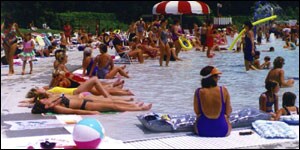
Poorly Maintained Pools
Approximately one-fourth of diarrheal RWI outbreaks that occur in pools are caused by chlorine-sensitive germs such as E. coli O157:H7 and Shigella. Many pool-associated skin, ear, eye, respiratory, wound and neurologic infections are also caused by chlorine-sensitive germs. These outbreaks clearly implicate poor pool maintenance as the cause, since proper disinfection would have prevented them. Analysis of 2002 pool inspection data from six sites across the United States determined that the majority of pools had one or more violations. One in 11 pools were closed immediately for public health reasons4.
Low Public Awareness
CDC conducted focus groups with parents of young children and found a general lack of awareness about RWIs among the public. Parents have virtually no knowledge of RWIs and their spread through swimming venues. In fact, many people think of chlorinated pool water as sterile environments. This lack of awareness likely results in behaviors (swimming while ill with diarrhea, swallowing of pool water, poor hygiene) that contribute to the spread of diarrheal RWIs5.
Improving Prevention Efforts
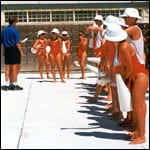
Public Health Agencies
Public health agencies and officials are encouraged to become involved in Recreational Water Illness Prevention Week by engaging the public, local aquatic operators, and the media in prevention efforts. Suggestions on how to promote healthy swimming are available at RWII Prevention and Response Tools for Public Health Professionals.
Aquatics Operators
Aquatics managers, operators, and staff can become involved by engaging swimmers and the media in prevention efforts. Find prevention brochures, posters, and information for the public at Healthy Swimming Resources. Access pool operation information at Disinfection & Remediation of Pools & Hot Tubs and prevention recommendations at Healthy Swimming Resources: Prevention Materials.
General Public
Raising awareness about RWIs is key to preventing the spread of RWIs. Follow the "Six Pleas" for Healthy Swimming to stop germs from causing illness at the pool:
• Please don't swim when you have diarrhea.
• Please don't swallow the pool water.
• Please take your kids on bathroom breaks or check diapers often.
• Please change diapers in a bathroom and not at poolside.
• Please wash your child thoroughly (especially the rear end) with soap and water before swimming.
Further swimmer protection information can be found at: http://www.cdc.gov/healthyswimming/swimmer_protection.htm
At Lakes, Rivers and the Ocean
When visiting natural waters, consider recommendations from the Environmental Protection Agency:
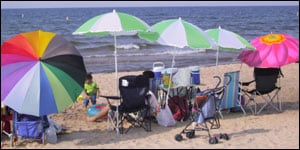
• Ask if your local beach water quality is monitored. If so, check out the latest results. (Oceans, Lakes, and Rivers)
• Avoid swimming after a heavy rain
• Look for storm drains (pipes that drain polluted water from streets) along the beach. Don't swim near them.
• Look for trash and other signs of pollution such as oil slicks in the water. These kinds of pollutants may indicate the presence of disease causing microorganisms that may also have been washed into the water.
Access EPA's brochure "Before You Go to the Beach" [PDF - 2 pages]
Visit CDC's Healthy Swimming website for further information on RWIs. See additional information for public health professionals, aquatics staff members, and the general public on RWII Prevention Week.
Additional CDC Features
References
1Castor ML, Beach MJ. Reducing illness transmission from disinfected recreational water venues: swimming, diarrhea, and the emergence of a new public health concern. Pediatr Infect Dis J 2004;23:866-70.
2Chen XM, Keithly JS, Paya CV, LaRusso NF. Cryptosporidiosis. N Engl J Med 2002;346:1723-31.
3Dziuban EJ, Liang, JL, Craun GF, Hill V, Yu PA, Painter J, Moore MR, Calderon RL, Roy SL, Beach MJ. Surveillance for waterborne disease and outbreaks associated with recreational water—United States, 2003–2004. In: MMWR Surveill Summ 2006 55(12):1-30.
4CDC. Surveillance data from swimming pool inspections: selected states and counties—United States, May-September 2002. MMWR 2003;52:513-6.
5McClain J, Bernhardt JM, Beach MJ. Assessing parents' perception of children's risk for recreational water illnesses. Emerg Infect Dis 2005;11:670-6.
Get email updates
To receive email updates about this page, enter your email address:
Contact Us:
- Centers for Disease Control and Prevention
1600 Clifton Rd
Atlanta, GA 30333 - 800-CDC-INFO
(800-232-4636)
TTY: (888) 232-6348 - Contact CDC–INFO
 ShareCompartir
ShareCompartir


